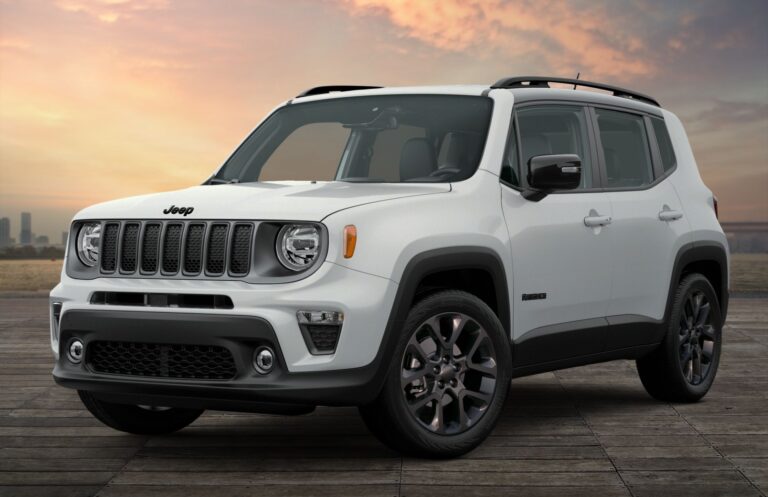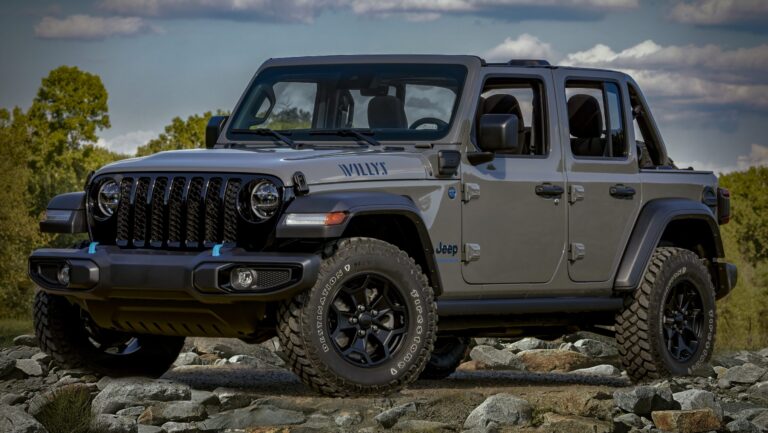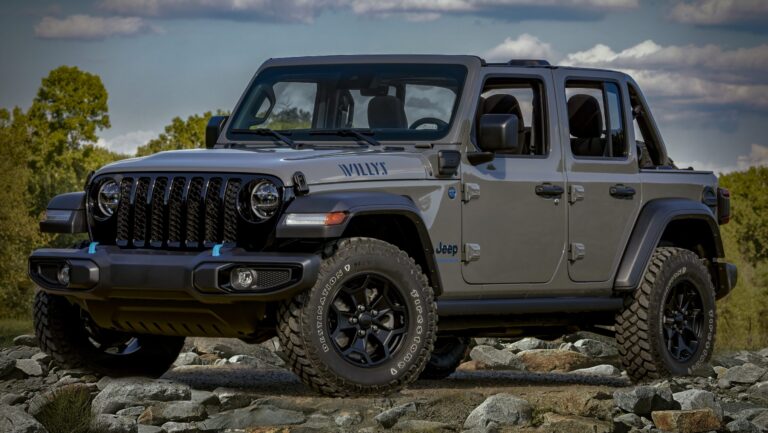1998 Jeep Grand Cherokee Rear Hatch For Sale: A Comprehensive Guide to Finding, Buying, and Installing Your Replacement
1998 Jeep Grand Cherokee Rear Hatch For Sale: A Comprehensive Guide to Finding, Buying, and Installing Your Replacement jeeps.truckstrend.com
The 1998 Jeep Grand Cherokee, affectionately known as the ZJ generation, holds a special place in the hearts of many automotive enthusiasts. Renowned for its robust off-road capability, comfortable interior, and distinctive styling, these vehicles continue to ply roads and trails worldwide. However, like any vehicle approaching or exceeding a quarter-century in age, certain components are prone to wear, damage, or the inevitable march of corrosion. Among the most commonly sought-after replacement parts is the 1998 Jeep Grand Cherokee Rear Hatch.
The rear hatch, a critical component of any SUV or hatchback, serves multiple vital functions. For the 1998 ZJ, it provides primary access to the cargo area, secures your belongings, houses the rear window, wiper mechanism, and defroster, and contributes significantly to the vehicle’s structural integrity and aesthetic appeal. Whether due to accident damage, pervasive rust, or a failing latch mechanism, finding a replacement rear hatch can be a necessity for maintaining the usability, safety, and value of your cherished ZJ. This comprehensive guide will delve into every aspect of sourcing, evaluating, and installing a 1998 Jeep Grand Cherokee rear hatch, transforming a potential headache into a manageable project.
1998 Jeep Grand Cherokee Rear Hatch For Sale: A Comprehensive Guide to Finding, Buying, and Installing Your Replacement
Understanding the 1998 Jeep Grand Cherokee (ZJ) Rear Hatch
The 1998 Jeep Grand Cherokee falls within the first generation (ZJ) of the Grand Cherokee lineup, produced from 1993 to 1998. While there were minor cosmetic and mechanical updates throughout these years, the basic design of the rear hatch remained largely consistent. The ’98 ZJ rear hatch is a single-piece unit that includes the rear window glass, the outer metal shell, the internal bracing, and provisions for the rear wiper assembly, high-mounted stop lamp, and the latching mechanism.
Key features and components of the 1998 ZJ rear hatch include:
- Rear Window Glass: Equipped with a defroster grid and often tinted.
- Wiper Arm and Motor: Essential for rear visibility in inclement weather.
- Exterior Handle and Latch: For opening and securing the hatch.
- Interior Trim Panels: Covering the internal mechanisms.
- Hinge Points: At the top, connecting to the roof, allowing the hatch to pivot upwards.
- Lift Supports (Struts): Gas-filled cylinders that assist in opening and holding the hatch open.

Common issues that often necessitate a replacement hatch for a 1998 ZJ include:
- Rust and Corrosion: Particularly prevalent around the window seals, the lower edge, and near the exterior handle, where water can accumulate. This is often the primary reason for replacement.
- Accident Damage: Rear-end collisions, backing into objects, or even hail damage can severely compromise the hatch’s integrity.
- Failed Components: While individual components like the wiper motor or latch can be replaced, severe rust or damage to the hatch itself often makes a full replacement more practical.
- Sagging/Misalignment: Worn hinges or structural issues can cause the hatch to sag, leading to sealing problems or difficulty closing.


Why Replace Your 1998 ZJ Rear Hatch? Common Scenarios
Deciding to replace your entire rear hatch is usually driven by one or more significant issues that render repair impractical or cost-prohibitive. Understanding these scenarios can help you confirm if a full replacement is indeed the best course of action:
- Extensive Rust Damage: This is by far the most common culprit. Rust can compromise the structural integrity of the hatch, leading to leaks, difficulty operating the latch, and a significantly diminished appearance. If rust has perforated the metal or spread extensively, patching may be a temporary fix at best.
- Severe Accident Damage: A bent, twisted, or severely creased hatch from a collision cannot always be straightened or repaired to factory specifications. Replacing it ensures proper fitment, safety, and functionality.
- Broken Rear Glass with Frame Damage: While the glass itself can be replaced, if the surrounding metal frame of the hatch is rusted or bent, a new piece of glass may not seal correctly, or the frame may not securely hold it.
- Complete Component Failure Beyond Repair: If the internal mechanisms (latch, wiper motor mounts, wiring channels) are extensively damaged or rusted in place, replacing the entire unit can be more straightforward than attempting intricate repairs.
- Restoration Projects: For enthusiasts restoring a ZJ to its former glory, a pristine, rust-free hatch is often a critical element, even if the original only had minor imperfections.
Sources for Finding a 1998 Jeep Grand Cherokee Rear Hatch For Sale
When embarking on the search for a replacement rear hatch, you have several avenues, each with its own advantages and disadvantages.
- Salvage Yards/Junk Yards (Auto Recyclers): This is often the most cost-effective option. You’re buying an original equipment manufacturer (OEM) part from a donor vehicle.
- Pros: Generally the cheapest option; OEM fit and finish; possibility of finding one in your vehicle’s color.
- Cons: Condition can vary wildly (inspect thoroughly!); you might have to remove it yourself (bring tools); no warranty or "as-is" sales are common.
- Tips: Call ahead to check inventory. Ask for photos if you can’t visit in person. Be prepared to remove it or pay a removal fee.
- Online Marketplaces (eBay, Craigslist, Facebook Marketplace, Forums): These platforms connect individual sellers and small businesses with buyers.
- Pros: Wide selection; competitive pricing; convenience of searching from home.
- Cons: Shipping can be expensive due to size/weight; risk of inaccurate descriptions or scams; condition assessment relies on photos/seller honesty.
- Tips: Prioritize local pickup to avoid shipping costs. Ask for multiple high-resolution photos from various angles, especially of common rust spots. Use secure payment methods.
- Specialty Jeep Parts Dealers (Online/Brick-and-Mortar): Some businesses specialize in used or refurbished Jeep parts.
- Pros: Often higher quality control; parts may be cleaned or tested; some offer limited warranties.
- Cons: Generally more expensive than salvage yards.
- New Aftermarket Parts: While less common for a full hatch assembly, some companies might produce new replacement parts.
- Pros: Brand new, no rust or previous damage; consistent quality.
- Cons: Fitment can sometimes be less precise than OEM; may not include all components (glass, wiring); potentially higher cost than used OEM.
- Dealerships (New OEM): Highly unlikely to find a brand new OEM hatch for a 1998 model. If one were available, it would be prohibitively expensive. This option is generally not viable for a vehicle of this age.
Key Considerations When Buying a Used Rear Hatch
Purchasing a used component requires diligence. Here’s what to look for:
- Condition Assessment is Paramount:
- Rust: This is your number one enemy. Check around the window seals, the lower edge, the hinge mounting points, and especially around the exterior handle where water often collects. Surface rust is manageable, but bubbling paint or perforation means trouble.
- Dents and Scratches: Minor cosmetic blemishes can be corrected with bodywork and paint, but significant dents will add to your overall cost.
- Glass Condition: Inspect for cracks, chips, delamination, or excessive scratching. Ensure the defroster lines are intact.
- Wiper Arm and Motor: Check if they are present and appear functional, though these can often be swapped from your old hatch.
- Latch Mechanism: Ensure the latch mechanism moves freely and doesn’t appear seized or damaged.
- Color Matching: If you’re lucky, you might find a hatch in your ZJ’s exact color. However, paint fades differently over time. Be prepared for the likelihood of needing to repaint the replacement hatch to perfectly match your vehicle’s current finish. Get your vehicle’s paint code (usually on the driver’s side door jamb) for accurate matching.
- Completeness: Clarify exactly what is included with the hatch. Does it come with:
- The glass?
- The wiper motor and arm?
- The interior trim panels?
- The exterior handle and latch mechanism?
- The wiring harness?
- The hinges?
- The lift supports (struts)?
- More complete units are often preferred, even if slightly more expensive, as sourcing individual small parts can be tedious and costly.
- Shipping and Pickup Logistics: A rear hatch is large and somewhat fragile. Factor in shipping costs if buying remotely. If picking up, ensure you have an appropriate vehicle (truck, large SUV with ample space) and possibly a second person to help load.
- Return Policy/Warranty: For used parts, "as-is" is common. However, some reputable salvage yards or online sellers might offer a short warranty (e.g., 30 days). Always clarify the return policy before purchase.
Installation Guide: Replacing Your 1998 ZJ Rear Hatch (Brief Overview)
Replacing a rear hatch is a moderately challenging DIY project, but it is certainly achievable with the right tools and a helper. Always consult your specific service manual for detailed instructions, and if uncomfortable, seek professional assistance.
Disclaimer: This is a simplified overview. Safety first! Wear appropriate personal protective equipment.
Tools You’ll Likely Need:
- Socket set (metric and standard)
- Wrench set
- Torx bit set (for some interior trim)
- Trim removal tools
- Flathead and Phillips screwdrivers
- Masking tape (for alignment marks)
- A second person to help lift and support the hatch
- Optional: New lift supports (struts), new weatherstripping
General Steps:
- Preparation: Open the hatch. Disconnect the negative terminal of your battery. Remove the interior trim panels from the old hatch.
- Disconnect Components: Disconnect the electrical wiring for the wiper motor, defroster, and high-mounted stop lamp. Carefully detach the rear washer fluid hose.
- Remove Lift Supports: With a helper supporting the hatch, unbolt or unclip the ends of the lift supports from both the hatch and the body.
- Mark Hinges: Use masking tape or a marker to outline the position of the hinges on the roof of the vehicle. This will help with alignment when installing the new hatch.
- Unbolt Hinges: With your helper providing full support, carefully unbolt the hinges from the roof of the vehicle.
- Remove Old Hatch: Carefully lift the old hatch off the vehicle and set it aside.
- Prepare New Hatch: Transfer any necessary components (latch, wiper motor, interior trim if not included) from your old hatch to the new one, or install new ones.
- Install New Hatch: With your helper, carefully position the new hatch, aligning the hinges with your marks. Bolt the hinges loosely at first.
- Attach Lift Supports: Reattach the new or existing lift supports.
- Connect Components: Reconnect all electrical wiring and the washer fluid hose.
- Alignment and Adjustment: Carefully close the hatch and check for proper alignment with the body lines. Adjust the hinge bolts as needed to achieve a flush fit. Ensure the latch engages securely.
- Test and Reassemble: Test the latch, wiper, and defroster. Once satisfied, reinstall the interior trim panels. Reconnect the battery.
Cost Analysis and Budgeting
The total cost of replacing your 1998 ZJ rear hatch can vary significantly:
| Component/Service | Estimated Price Range (USD) | Notes |
|---|---|---|
| Used Rear Hatch | ||
| Salvage Yard (Bare) | $100 – $300 | Varies by condition, completeness, and yard; may require self-removal. |
| Salvage Yard (Complete) | $250 – $500 | Includes glass, some components; often removed by yard staff. |
| Online Marketplace (Bare) | $150 – $400 | Plus potential high shipping costs. |
| Online Marketplace (Complete) | $300 – $600 | Plus potential high shipping costs. |
| Specialty Dealer (Refurbished) | $400 – $800 | Often higher quality control, sometimes with warranty. |
| New Aftermarket Hatch | $700 – $1200+ | Less common for full assembly; may not include glass or components. |
| Optional/Additional Costs | ||
| Shipping | $100 – $400+ | Highly variable by distance and carrier. |
| New Lift Supports (Pair) | $30 – $70 | Highly recommended to replace with the hatch. |
| New Weatherstripping | $40 – $100 | Ensures a good seal and prevents leaks. |
| Professional Painting | $300 – $800+ | If color doesn’t match or unit is bare metal; depends on quality and shop. |
| Professional Installation | $150 – $400 | 2-4 hours of labor, depending on shop rates. |
| Total Estimated Cost | $200 – $1800+ | Wide range reflects choice of parts, DIY vs. professional, and painting needs. |
Tips for a Successful Purchase and Replacement
- Be Patient: Finding the perfect match (color, condition) might take time.
- Inspect Thoroughly: Never buy sight unseen without high-quality, detailed photos. If buying in person, take your time inspecting every inch, especially for rust.
- Ask for a VIN: If buying from a salvage yard, ask for the VIN of the donor vehicle. This can help confirm compatibility.
- New Struts are a Must: Even if the used hatch comes with struts, they are often worn out. Replacing them with new ones is a small investment that makes a huge difference in convenience and safety.
- Consider Weatherstripping: Old weatherstripping can lead to leaks. Replacing it when installing the new hatch is a smart move.
- Factor in Painting: Unless you get an exact color match in perfect condition, budget for paint. A mismatch will stick out.
- Don’t Rush Installation: Take your time, get a helper, and double-check all connections and alignments before fully tightening everything.
Potential Challenges and Solutions
- Challenge: Finding the Right Color:
- Solution: Accept that painting is likely. Get your vehicle’s paint code and find a reputable body shop.
- Challenge: Damaged Components on Purchased Hatch:
- Solution: Inspect before buying. If buying remotely, negotiate the price down, or be prepared to source individual parts (wiper motor, latch) separately.
- Challenge: Difficult Installation:
- Solution: Enlist a friend or family member for help. If it becomes overwhelming, don’t hesitate to take it to a professional mechanic or body shop.
- Challenge: Shipping Damage:
- Solution: Inspect the package thoroughly upon arrival before signing. Document any damage with photos and contact the seller and carrier immediately. Good sellers will pack securely and offer insurance.
Frequently Asked Questions (FAQ)
Q: Is the 1998 ZJ rear hatch compatible with other ZJ model years (1993-1997)?
A: Yes, generally the rear hatch assembly for the 1993-1998 Jeep Grand Cherokee (ZJ) is interchangeable. There might be minor differences in wiring harness connectors or trim attachment points, but the main structure, hinge points, and latch mechanism are the same. Always confirm with your seller if possible.
Q: Can I replace just the rear glass instead of the entire hatch?
A: Yes, it is possible to replace just the glass. However, if the reason for replacement is extensive rust around the window frame, or if the metal of the hatch is bent or compromised, replacing the entire hatch might be a more durable and cost-effective long-term solution.
Q: What are the most common rust spots on a 1998 ZJ rear hatch?
A: The most common areas for rust are around the perimeter of the rear window seal, the lower edge of the hatch, and especially around the exterior handle assembly where water can collect and sit.
Q: How much does professional installation typically cost?
A: Professional installation usually ranges from $150 to $400, depending on the shop’s labor rate and the complexity of the job. It typically takes 2-4 hours of labor.
Q: Do I need to repaint the replacement hatch?
A: Most likely, yes. Even if you find a hatch in your vehicle’s original color, paint fades differently over time due to sun exposure and environmental factors. To ensure a perfect match, professional painting is usually required.
Q: Should I buy new lift supports (struts) with the replacement hatch?
A: Absolutely. Lift supports wear out over time, and even if the used hatch comes with them, they are likely weak. New lift supports are relatively inexpensive and provide the proper assistance for opening and holding the hatch securely.
Conclusion
The 1998 Jeep Grand Cherokee rear hatch is more than just a piece of metal and glass; it’s a vital component that ensures the functionality, security, and aesthetics of your beloved ZJ. While finding and replacing one might seem daunting, it’s a completely manageable project with the right knowledge and approach. By understanding the common issues, knowing where to source parts, diligently assessing their condition, and preparing for the installation process, you can breathe new life into your Grand Cherokee. A functional, rust-free rear hatch not only enhances the vehicle’s appearance and practicality but also extends its life, allowing you to continue enjoying the enduring spirit of the ZJ generation for years to come.




